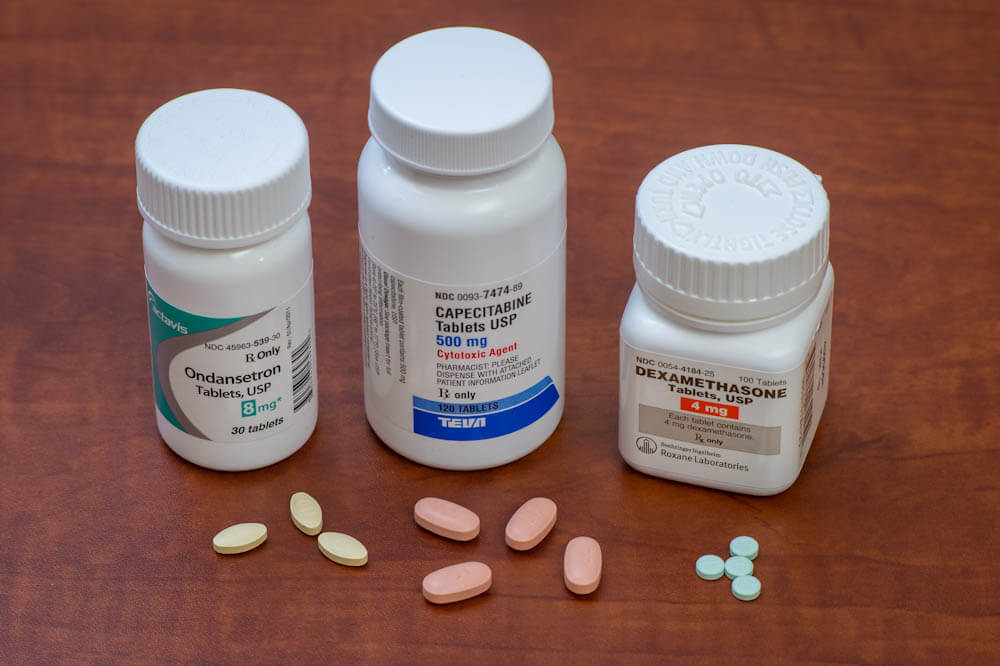Chemotherapy agents can be divided into three major classes, based on the manner in which they act on cancer cells:
- Drugs that are active against dividing cells by targeting a specific phase of the cell cycle—the process by which cells duplicate their DNA and separate into two daughter cells.
- Drugs that are active against dividing cells at any phase of the cell cycle.
- Drugs that are active against cell structures unrelated to the cell cycle.
Decades of research have shown which chemotherapy drugs work best in different types of cancer, enabling doctors to choose the best course of treatment for each patient. By combining drugs with different mechanisms of action, it’s often possible to attack multiple vulnerabilities in cancer cells, increasing the drugs’ effectiveness.
Each of the three classes of chemotherapy contains a wide range of agents. Here are some examples:
Category 1
This group includes drugs known as antimetabolites and antifols, which target the S phase of the cycle, when cells copy their DNA. Antimetabolites work by preventing some of the normal building blocks of DNA from being incorporated into the DNA molecule; antifols work by inhibiting a key enzyme needed to produce one of those building blocks.

Examples of antimetabolites include 5-fluorouracil, used to treat colon, esophageal, pancreatic, breast, and cervical cancer, as well as other malignancies; and gemcitabine, used to treat some breast, ovarian, lung, and other cancers. An example of an antifol is methotrexate, used to treat certain forms of leukemia as well as some non-cancerous conditions.
Drugs that target the G2 phase of the cell cycle, when the cell prepares for division, are also in this category. These agents include bleomycin, which is thought to chop DNA into fragments, and etoposide, which is thought to cause breaks in a single strand of DNA. Other drugs act on the M phase, when a cell divides into two identical daughter cells. Examples include drugs known as vinca alkaloids, which are thought to inhibit the mitotic spindle, a structure that segregates chromosomes into each of the daughter cells; and taxanes, which impede the fibers that make up the mitotic spindle.
Category 2
These drugs, which act against dividing cells regardless of cell cycle phase, include alkylating agents such as cyclophosphamide and cisplatin, which bind to DNA, thereby preventing normal DNA duplication. Others in this category are drugs known as intercalators, which distort the normal shape and structure of DNA by inserting tiny ring-like molecules between the rungs of the DNA helix. Examples of intercalators are doxorubicin, which is used to treat breast and bladder cancer, Kaposi’s sarcoma, and certain types of lymphoma and leukemia; and daunorubicin, used to treat specific types of acute leukemia. A third type of drug in this category are topoisomerase 1 inhibitors, which interfere with the process of DNA repair.
Category 3
Agents in this category work by attaching to specific parts of cells, impeding their ability to grow and divide. These include corticosteroids and drugs known as hormone antagonists, which bind to specific receptors on cells, preventing the cells from receiving growth signals. An example of a hormone antagonist is tamoxifen, which is used to treat breast cancers fueled by the hormone estrogen.
Combinations of two or more chemotherapy agents are a common part of cancer treatment. Such combinations generally involve agents that act in complementary ways—that target different weaknesses in cancer cells – and that, for the most part, do not have overlapping side effects. In this way, doctors can increase the potency of treatment while keeping side effects at a manageable level.
Chemotherapy drugs act not only on cancer cells but on normal cells as well, accounting for many of the side effects—such as hair loss and nausea, and increased susceptibility to infection—commonly associated with the drugs. Normal cells are better able to recover from chemotherapy because the drugs have a disproportionate impact on cells whose growth-control systems have broken down—that is, cancer cells. As a result, normal cells can generally withstand treatments that prove lethal to cancer cells.
